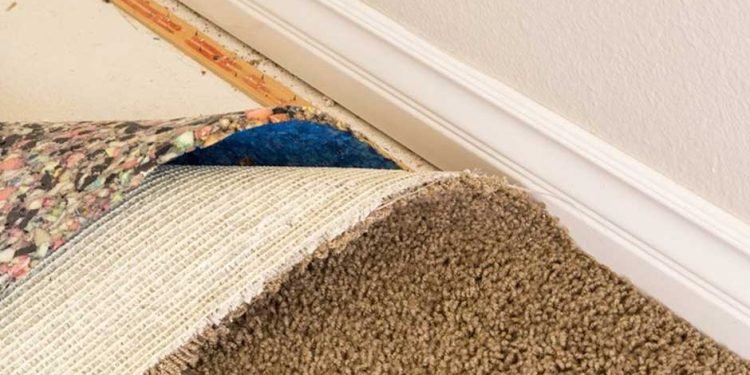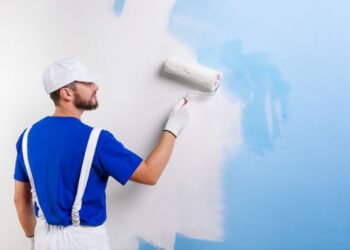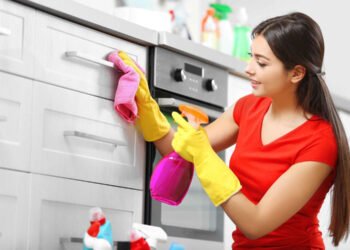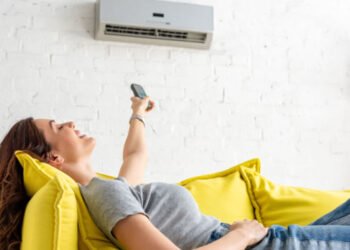Mold and mildew are real threats that lurk in the shadows, waiting to ruin your carpets. What can you do when these unwelcome visitors sneak into your home? Carpet damage caused by mold and mildew can range from musty odors and discoloration to serious structural degradation, leaving homeowners feeling helpless and overwhelmed. But fear not. Carpet Cleaning Pros will help. This carpet cleaning company in Slough will give you all the information you need to know about how to deal with, prevent, and address mold or mildew growth in carpets to keep them looking like new for years to come.
What Causes Mold And Mildew Growth In Carpets?
The primary cause of mold and mildew growth in carpets is excessive moisture. When carpets are exposed to water and moisture, they become a breeding ground for mold and mildew spores. This is particularly true for carpets that are located in areas of the home that frequently experience water damage or high humidity levels, such as basements, bathrooms, or kitchens.
Another factor that contributes to mold and mildew growth in carpets is poor ventilation and airflow. When carpets are unable to dry out fully after being exposed to water or moisture, it creates the ideal environment for mold and mildew spores to thrive. Inadequate air circulation in a room can also exacerbate the problem by preventing the carpet from releasing moisture into the air.
Furthermore, carpets that are not regularly cleaned and maintained are also more susceptible to mold and mildew growth. Dirt and debris that accumulate in the carpet fibers can trap moisture and create the perfect conditions for mold and mildew to grow. In addition, if carpets are not cleaned properly, the cleaning solutions used can leave behind residues that provide an ideal environment for mold and mildew spores to grow.
How Address Mold And Mildew Growth In Carpets?
Here are some practical steps to ensure your carpets remain free of mold and mildew growth:
- Identify The Cause: Mold and mildew grow in damp conditions, so it is essential to identify the source of moisture that is leading to carpet dampness. It could be a leaky roof, damaged pipes, or high humidity levels. Once you have identified the cause, address it immediately.
- Dry the Carpet: Once you have identified the source of moisture, dry the carpet thoroughly using a fan, dehumidifier, or heater. For bigger carpets, it might be best to hire a professional cleaner or water damage restoration service to address this properly.
- Vacuum Regularly: Regular vacuuming helps to prevent dirt and debris buildup that can trap moisture and encourage mold growth. Use a vacuum with a high-efficiency particulate air (HEPA) filter to capture small particles and prevent them from circulating in your indoor air.
- Clean With Vinegar: Vinegar is a natural disinfectant that can help kill mold and mildew. Mix equal parts of distilled white vinegar and water and spray it on the carpet. Let it sit for 10 minutes, then vacuum the area.
- Professional Cleaning: It is advisable to hire a professional carpet cleaner to deep clean your carpets at least once a year. Professional cleaners have specialized equipment and expertise to address mold and mildew growth in carpets effectively.
How To Prevent Mold And Mildew Growth In Carpets?
It’s critical to keep your carpets clean and dry. This means regular vacuuming to remove dust, dirt, and other debris that can provide a breeding ground for mold and mildew. In addition, any spills or stains should be cleaned up immediately to prevent them from seeping into the carpet fibers and creating a damp environment that can promote mold and mildew growth.
When cleaning your carpets, it’s important to use the right products and techniques to avoid exacerbating the problem. Harsh chemicals or excessive moisture can damage your carpet fibers and create an even more hospitable environment for mold and mildew to thrive. Instead, opt for gentle, eco-friendly cleaning solutions, and be sure to allow your carpets to dry completely before walking or placing furniture on them.
Along with regular cleaning, proper ventilation is an important factor in mold and mildew prevention. Rooms with carpeting should have good airflow, which can be achieved through open windows, fans, or air conditioning. This helps to reduce humidity levels, which can create a moist environment that is ideal for mold and mildew to grow. If your home is particularly prone to moisture buildup, consider investing in a dehumidifier to regulate the humidity levels in the air.
It’s important to be proactive in preventing mold and mildew growth in your carpets by taking preventative measures. This includes using area rugs or carpets runners in high-traffic areas to reduce wear and tear on the carpeting, as well as investing in quality carpets that are durable and stain-resistant.












